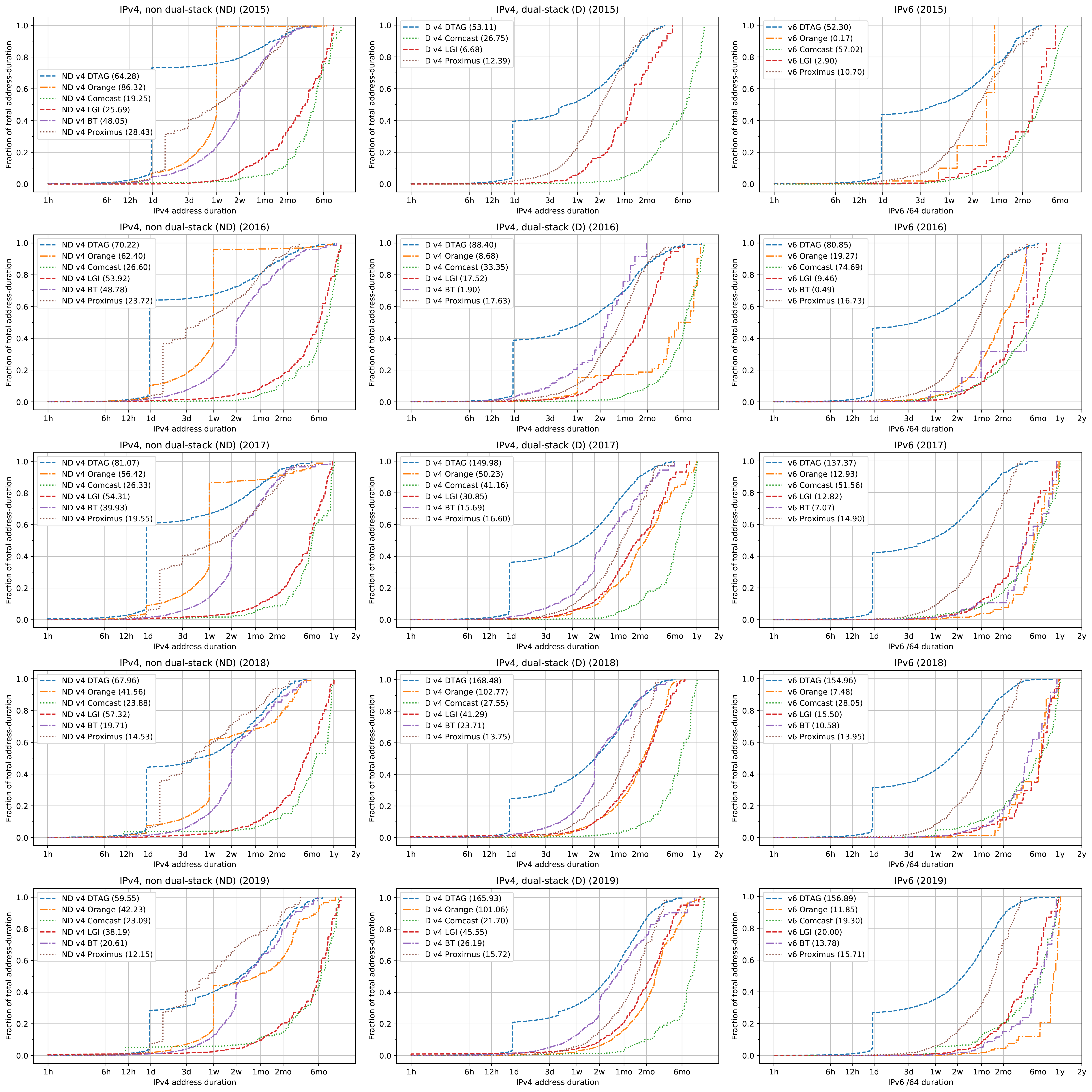Supplemental data for "DynamIPs: Analyzing address assignment practices in IPv4 and IPv6"
Longitudinal analysis of assignment durations
Cumulative total time fraction for IPv4 and IPv6 assignment durations in six large ASes from 2015 to 2019. For IPv4, we further separate address durations into dual-stack (D) and non-dual-stack (ND) to highlight differences. The number in parentheses is the total assignment duration in years from all probes in the AS.

The year-to-year trends above confirm our insights from the overall dataset: IPv6 durations have consistently been longer than IPv4 durations and address durations in dual-stack networks tend to be longer than durations in non-dualstack IPv4 networks.
Longitudinal analysis of common prefix lengths
Common prefix lengths between subsequent IPv6 /64 prefix assignments observed by RIPE Atlas probes in six large ASes from 2015 to 2019. The orange bars indicate the total assignment change instances where the previous and subsequent assignments shared a prefix length of n, i.e., subsequent addresses have n bits in common. The blue bars indicate the number of probes that observed at least one assignment change with n bits in common.







